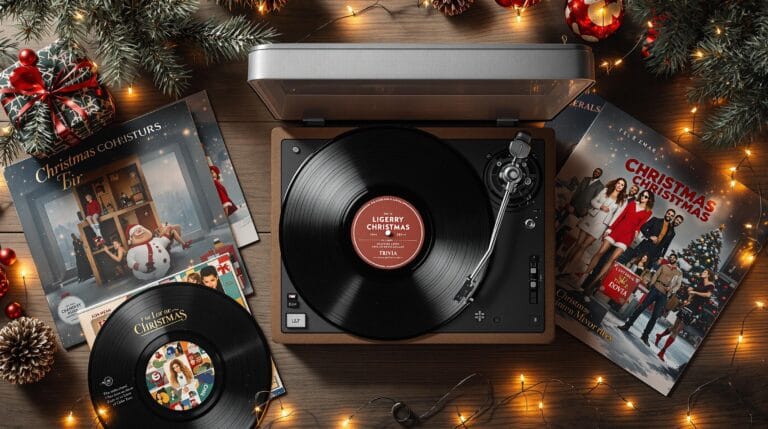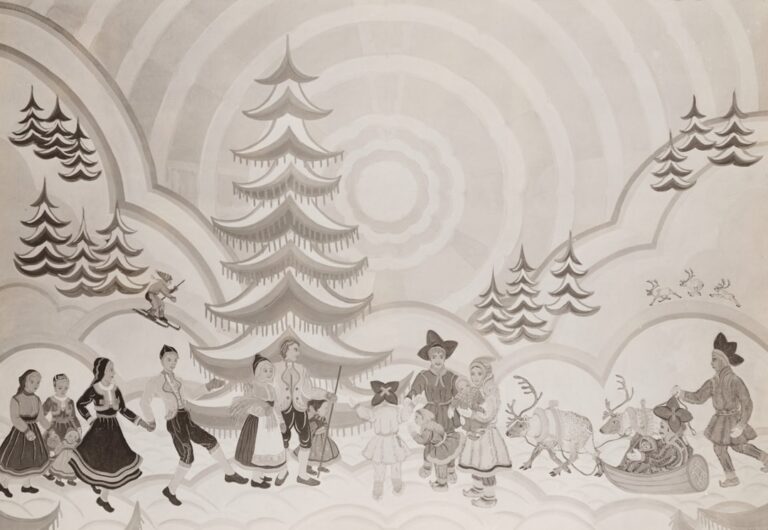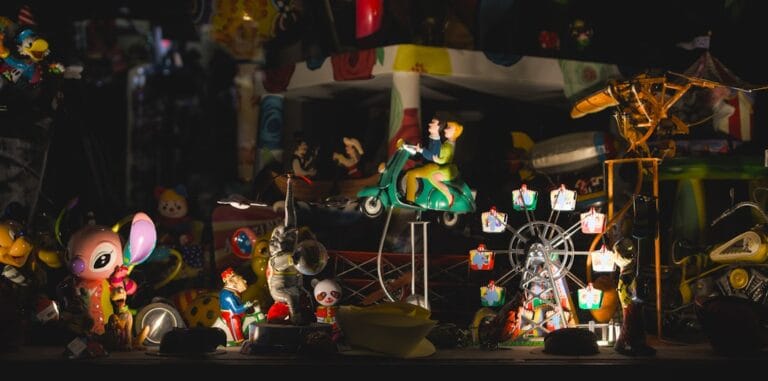Want to host a fun and festive escape room at home? A Stolen Christmas Gift Escape Room is a holiday-themed game where players solve puzzles to recover missing gifts. It’s perfect for family gatherings, school events, or community parties. Here’s what you’ll need and how to set it up:
- Materials: Wrapped boxes, stockings, ornaments, combination/key locks, UV flashlight, and holiday decorations.
- Setup: Create a story about stolen gifts, organize your space into puzzle zones, and hide clues in festive props like gift tags or ornaments.
- Puzzles: Use Christmas trivia, ciphers, and hidden messages to guide players to the final prize.
- Game Time: Plan for 45–60 minutes of play, with a 5-minute briefing and up to three hints.
This activity blends holiday cheer with an engaging challenge for all ages. Follow the steps to create a memorable experience!
The Sprite on the Light || A Downloadable DIY Christmas …
Required Materials and Supplies
Here’s what you’ll need to put together a stolen Christmas gift escape room.
Basic Props and Decorations
Set the stage with festive items that tie into the storyline:
-
Gift-Related Items
- 3-5 empty wrapped boxes
- Gift bags with tissue paper
- Ribbon, bows, and gift tags
- A "special" gift box to serve as the final prize
-
Holiday Decorations
- A 6-foot artificial tree
- String lights (at least 100 bulbs)
- A mix of standard ornaments and puzzle-related ones
- 3-4 stockings for hiding clues
- Garland, tinsel, and fake snow or cotton batting
Puzzle Materials
These items will help you create fun and challenging puzzles:
-
Lock Systems
- 3-4 combination locks
- 2-3 key locks
- 1-2 directional locks
- Lock boxes or cases
-
Puzzle Components
- UV flashlight and invisible ink pen
- Letter-sized paper for clues
- Colored markers, scissors, and tape
- Manila envelopes and small containers
- A cipher wheel or decoder ring
- Holiday-themed stationery
Room Atmosphere Items
Set the mood with these extras:
-
Lighting
- A dimmer switch or adjustable lamp
- Battery-operated candles
- Red and green LED spotlights
- Flashlights for participants
-
Audio Equipment
- A Bluetooth speaker
- A playlist of Christmas music
- Timer or countdown clock
- Optional sound effects like sleigh bells or footsteps
-
Environmental Elements
- Christmas-scented room spray
- Portable heater or fan for comfort
- "Do Not Enter" signs
- Room dividers or curtains
- Seasonal throw pillows and blankets
Once you’ve gathered everything, you’re ready to start setting up your escape room!
Setup Instructions
1. Write the Story
Start by creating a short, engaging story about the stolen gift. This story should:
- Clearly explain the players’ objectives.
- Set a 45-minute time limit for completing the game.
- Provide enough context to tie the puzzles together.
Adjust the tone based on your audience. Keep it fun and simple for kids, while adding layers of intrigue for adults.
2. Plan Room Setup
Organize your space to ensure the puzzles flow logically. Divide the room into specific zones:
- Entry Zone: Begin with easier puzzles to help players build confidence.
- Main Activity Area: Use a central feature, like a Christmas tree, as the focus of the game.
- Final Challenge Area: Reserve a special spot for the big reveal of the stolen gift.
Keep these details in mind:
- Make sure lighting is bright enough for players to read clues.
- Arrange furniture and decorations to subtly guide movement.
- Maintain clear sight lines to key areas or objects.
3. Make the Puzzles
- Opening Puzzle: Start with a simple challenge, like a Christmas card containing a coded message that unlocks a combination lock.
- Middle Challenges: Create two or three puzzles using holiday-themed elements. Ideas include:
- Lock combinations based on holiday trivia.
- Patterns hidden in Christmas ornaments.
- Messages concealed in gift wrap designs.
- Final Challenge: Combine elements from earlier puzzles to reveal the stolen gift’s location.
4. Test the Room
Solo Test
Run through the setup yourself. Time the game, document solutions, and check that all locks and lighting work as intended.
Group Test
Invite a small group to test the room. While they play:
- Observe quietly without interfering.
- Take note of any puzzles that are too difficult or too easy.
- Track how long it takes them to finish.
Make adjustments to ensure the game can be completed in about 45 minutes before launching it.
5. Run the Game
- Start with a quick 5-minute briefing on rules and safety.
- Monitor the players’ progress without being intrusive.
- Offer up to three hints if they get stuck.
- Keep track of completion times and success rates.
- Have spare equipment ready in case something breaks.
Stay close to assist if needed, but avoid disrupting the game’s atmosphere.
sbb-itb-df5c804
Adding Christmas Trivia
Trivia as Puzzle Elements
Incorporate Christmas trivia into your puzzles to keep players engaged and entertained. Use trivia to create layered challenges that require solving questions to move forward. Here are some ideas:
- Lock Combinations: Use answers to Christmas-themed trivia as codes for directional or number locks. For instance, the year "1939" could unlock a padlock.
- Hidden Messages: Design decoder wheels or ciphers that reveal a secret when players answer Christmas trivia correctly. The hidden message might lead to the next clue or provide instructions for finding the stolen gift.
- Progressive Challenges: Create a sequence of trivia-based puzzles where each correct answer reveals part of a larger solution. For example, players might gather holiday facts to complete a Christmas carol or decode a festive message.
Blend these trivia elements naturally into your puzzles to enhance the holiday theme.
Using Trivia About Christmas Resources

Take your puzzles to the next level with pre-made Christmas trivia from Trivia About Christmas. These resources make it easy to add professional-quality questions to your game:
- Ready-Made Question Sets: Choose from over 40 themed questions covering topics like Christmas movies and traditions. Use them for:
- Lock combinations
- Hidden clues in decorations
- Building puzzle elements
- Digital Integration: Leverage PowerPoint-formatted questions to create interactive digital puzzles. Project clues onto walls or use tablets for challenges that players solve to advance.
Combine trivia with physical props and decorations for a more immersive experience. For example, place trivia cards near Christmas ornaments or hide clues inside wrapped gift boxes. This approach tests players’ holiday knowledge while keeping them fully engaged in the search for the stolen gift.
Making Your Escape Room Better
Take your escape room to the next level by fine-tuning the holiday atmosphere, puzzle difficulty, and game timing for a memorable stolen gift mystery.
Add Holiday Elements
Turn your escape room into a festive Christmas adventure where players feel driven to recover the missing gift. Use a decorated Christmas tree as the centerpiece, hiding puzzle pieces among the ornaments. Add warm white string lights to key areas, and use spotlights to draw attention to important clues.
Engage all the senses to immerse players fully:
- Play soft Christmas music in the background
- Use a pine-scented air freshener
- Keep the room at a cool temperature
- Scatter wrapped presents as both clues and distractions
Adjust Puzzle Difficulty
For simpler challenges, stick to basic substitution codes and clear visual hints, limiting puzzles to 3-4 steps. For a tougher experience, incorporate multi-step puzzles, logic challenges, and time-sensitive tasks. Add a mix of real clues and clever distractions to keep players on their toes.
Choose Game Duration
Match the game length to the complexity of your puzzles and the number of participants. Begin with a 5-minute rules overview. Include a three-hint system to help players stay on track. Aim for a total playtime of 45-60 minutes, tweaking the duration based on test runs and puzzle difficulty.
Conclusion: Final Setup Steps
Wrap up your setup using this checklist to ensure your storytelling, environment, puzzles, and game mechanics are perfectly aligned.
Main Points
Check your setup against these key areas:
-
Story Elements
Double-check that the story fits the stolen gift theme. Make sure every clue, puzzle, and the final reveal ties back to this narrative. -
Room Environment
Prep the space thoroughly:- Lights and sound system should work seamlessly to create the right atmosphere.
- Keep the room temperature between 65–68°F.
- Secure all props and decorations.
- Clearly mark emergency exits.
- Have backup batteries ready for any electronic components.
-
Puzzle Readiness
Go through all puzzle elements to confirm:- Every piece is in place and reset to its starting position.
- Locks are calibrated correctly.
- Spare components are available.
- Items are placed in their designated locations.
-
Game Operations
Test the game to ensure smooth operation:- Run a full 45–60-minute playthrough.
- Verify that all hints and solutions work as planned.
- Prepare hint cards or set up a digital hint system.
- Set up a countdown timer.
- Have backup puzzles ready, just in case.






